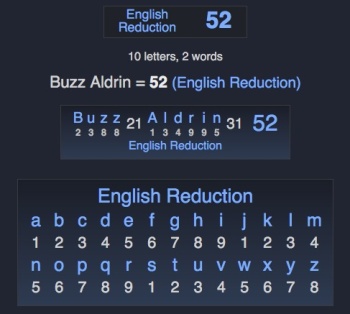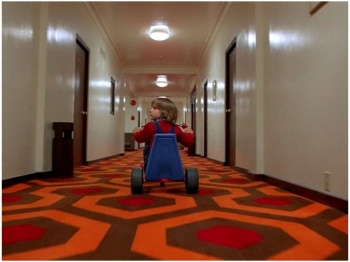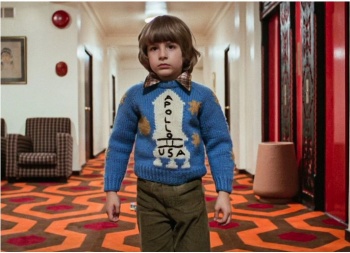It is believed by some that IF the moon landing project was faked, Hollywood director Stanley Kubrick had a hand in it. Part of the reason for this “conspiracy” theory - might be that Kubrick was familiar to - and had dealings, with NASA.
His movie, 2001 - A Space Odyssey - premiered in Washington, D.C. on April 2, 1968 - less than a year before the moon landing, and was released in the U.S. on April 3. The UK release was May 1. Most of the filming took place in England, at Shepperton Studios.
Kubrick had previous contact with NASA - and on more than one occasion.
The Carl Zeiss Planar 50mm f/0.7 is one of the largest relative aperture (fastest) lenses in the history of photography. The lens was designed and made specifically for the NASA Apollo lunar program to capture the far side of the Moon in 1966. Stanley Kubrick used these lenses when shooting his film Barry Lyndon, which allowed him to shoot scenes lit only by candlelight. In total there were only 10 lenses made. One was kept by Carl Zeiss, six were sold to NASA, and three were sold to Kubrick.
For 2001:
According to biographer Vincent LoBrutto, Universe was a visual inspiration to Kubrick. The 29-minute film, which had also proved popular at NASA for its realistic portrayal of outer space, met "the standard of dynamic visionary realism that he was looking for."
Kubrick hired the company that produced it, Graphic Films Corporation—which had been making films for NASA, the US Air Force, and various aerospace clients—as a design consultant. Graphic Films' Con Pederson, Lester Novros, and background artist Douglas Trumbull airmailed research-based concept sketches and notes covering the mechanics and physics of space travel, and created storyboards for the space flight sequences in 2001. Trumbull became a special effects supervisor on 2001.
--------------------------------
JFK was a pivotal figure in the moon project, since it was his call to action.
JFK's birthday was May 29. He would have turned 52 years old. The moon landing occurred 52 days later on July 20.
BUZZ ALDRIN - reduces to 52 - in the Reduction cipher.
Both JFK and Arthur C. Clarke - the co-author of the screenplay for the film, and an accomplished science fiction author - were born in 1917. Clarke would also turn 52 years old in 1969, in December.
The Reduction cipher - uses single digits only, 1-9.

In his movie
The Shining Kubrick clearly references the Apollo 11 mission. There are interpretations of why he did this; of course one is that he was signaling his involvement with a staged event.
An article detailing the interpretation:
https://faroutmagazine.co.uk/the-shining-stanley-kubrick-clues-faked-moon-landings/
May 23, 1980 (United States)
October 2, 1980 (United Kingdom)
At the start of the film, Jack Nicholson’s Jack Torrance meets with the manager of the hotel who is entrusting the protagonist with the building over the winter. Meeting in an ornate office, the room contains several neatly arranged items, including a small American flag on the desk and a statue of an eagle looking over them at the window. Theorists believe this eagle nods to the name of the lunar landing module that allegedly carried Apollo 11 that is also called ‘eagle’. As in, “The Eagle has landed.”
Famously unhappy with the final film, the author of the original novel, Stephen King, believed that the film was changed too much from the novel, containing little of the same character motivations and heart.
Just one of these changes was to make the ghostly Grady girl from King’s original book, into twins, with the image of the duo standing at the end of the hotel hall having since become an iconic shot of horror cinema. Conspiracy theorists believe that Kubrick made this change to signify the failed Gemini mission by NASA, with both characters acting as ghostly reminders of wrongdoing.
Now repurposed as a piece of movie memorabilia to be plastered on the back of wallets and novelty picture frames, the orange and maroon carpet of the Overlook hotel has to be the most iconic furnishings in all of cinema.
A peculiar design that is given a lot of screen time, we see the carpet throughout the film, particularly when we see Danny, Torrance’s son, playing with toys in the corridor. Shot from above to appreciate all its hypnotic glory, the strange pattern looks remarkably similar to the birds-eye-view of the Apollo 11 launchpad, mimicking its sharp edges and unusual shape.

By far the most obvious inclusion on this list, in one extended sequence of the film when Danny enters the dreaded room 237, the young boy is seen wearing a knitted jumper that reads ‘Apollo 11, USA’.
An obvious reference to the famous space flight that took place in 1969, it is certainly a peculiar choice of clothing for Stanley Kubrick to pick. Considering the director’s meticulous control over his film sets, this choice from Kubrick was most definitely made on purpose, which fuels the theories of conspiracy fans who believe this may be the strongest piece of evidence to suggest the director’s involvement.

One of the strangest and most unnecessary changes that Stanley Kubrick made from Stephen King’s book was to change the number of the terrifying Room 217 in the novel, to 237 in the film.
A strange choice that has no impact at all on the film or the story, it is believed by theorists that Stanley Kubrick changed the number to reflect the 237,000 miles that separate Earth from the moon. Entering the room in his neat Apollo 11 jumper, Danny quickly exits covered in mysterious scratches and bruises with his cosmic jumper torn at the shoulder, alluding to the mission itself failing to reach its fateful destination 237,000 miles away.


